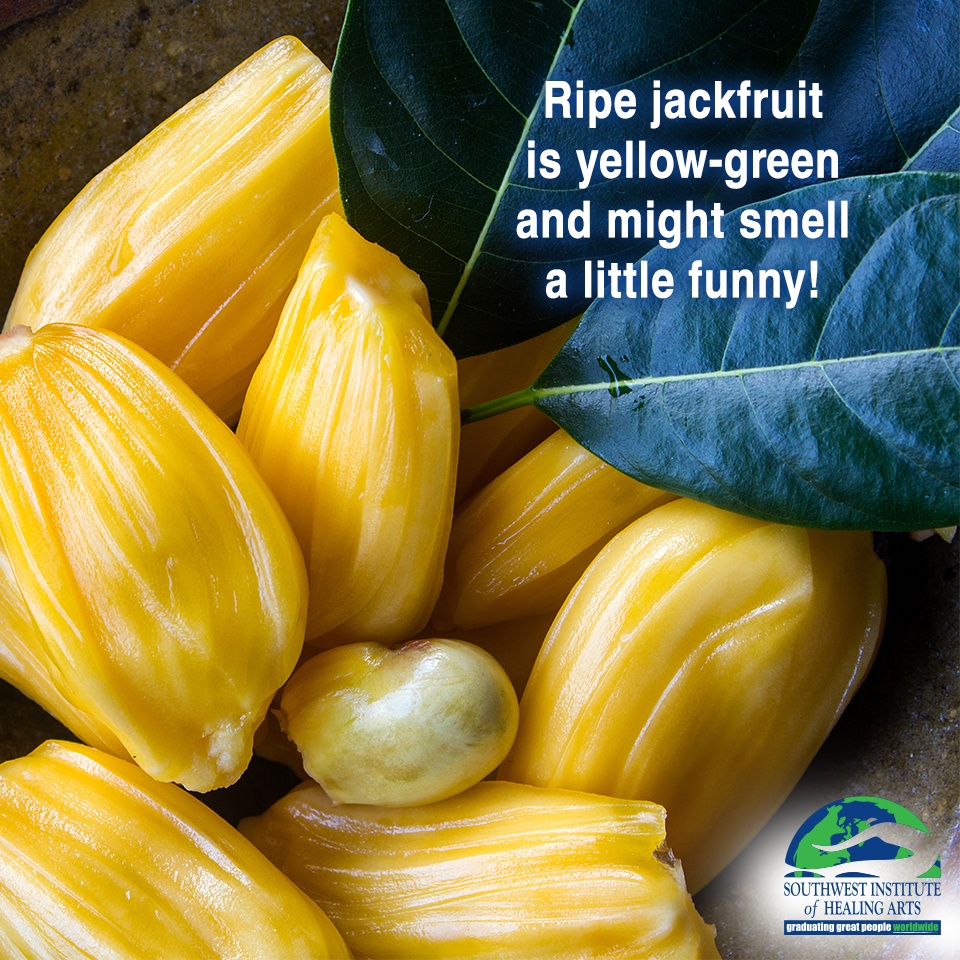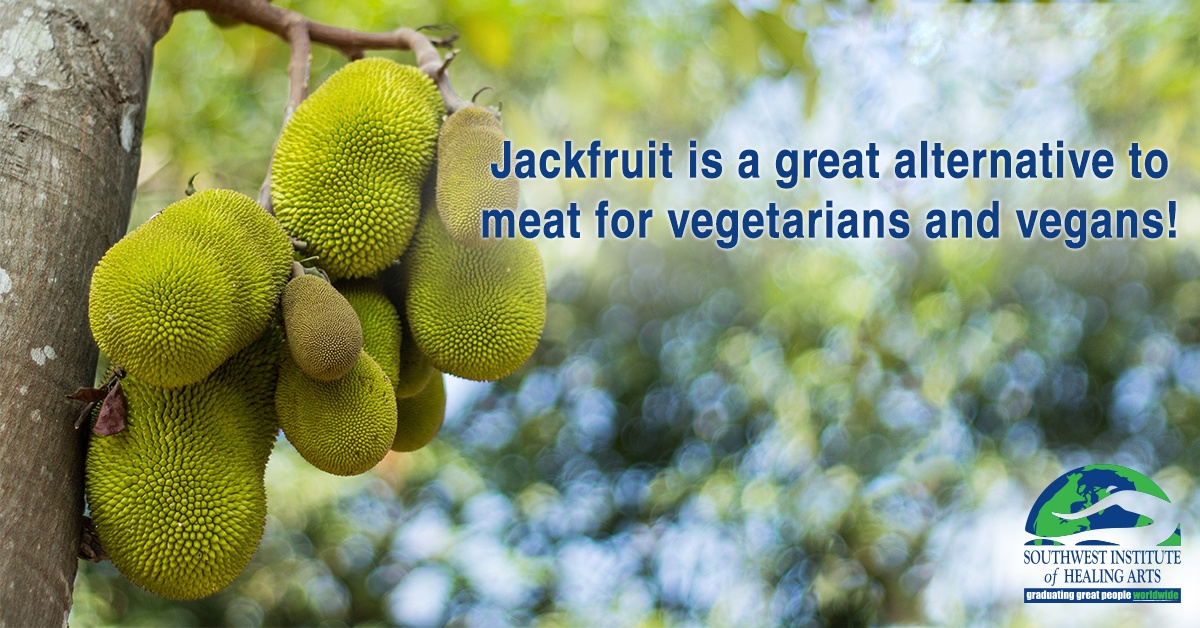Odds are that unless you have been eating a plant-based diet for an extended period of time, you have probably never heard of Jackfruit. Don’t worry—you are not alone! The good news is that this multifaceted member of the breadfruit family is becoming increasingly well-loved in American households and can serve as a great alternative to meat if you’re looking to try out vegetarian and vegan-friendly options in your S.O.U.L. foods or holistic nutrition diet!
Your Versatile Meat Substitute
Jackfruit originated in India and spread to Southeast Asia, as it thrives in the tropical climate there. More recently, it has started to be sustainably farmed in Mexico, where it is known as Jaca (pronounced “hawka”). In fact, although there are some parts of Southern Florida where jackfruit can be found growing, most of our jackfruit in the United States comes directly from Mexico.
So, what does this strange-sounding fruit look like? To be honest… a bit alien! As the largest tree-borne fruit in the world, jackfruit averages between twenty and forty pounds—yet, can grow to weigh up to one hundred pounds! Jackfruit is primarily green in color and turns a yellowish-green, often bruising on the outside, when ripe. The insides of this mysterious, bumpy fruit consist of edible bulbs or pods known as “arils” which encapsulate the seeds of the fruit (which are also edible when cooked!). When a jackfruit has hit its peak, its bulbs have a sweet mango, banana, or pineapple taste. That makes it perfect for sweet deserts like tropical fruit salad and sorbets.

“Hold on,” you might say. “Meat doesn't have a sweet tropical fruit taste!” True… and this is what makes jackfruit so versatile! The fruit itself actually has a completely different taste when ripe versus unripe. If you are planning on using jackfruit as a meat substitute, you will need to get it before it is ripe. At this stage, the cooked bulbs will take on a texture similar to pulled chicken and will have a much more neutral flavor. This is because the pods’ starchy and fibrous texture allows the fruit to take on the taste of whatever you cook the “meat” in. This means that you can effectively sub in unripe jackfruit in any dish that would normally contain meat. Craving tacos? Just pull out your favorite recipe for taco seasoning and use jackfruit instead of chicken! Want a pulled pork hoagie? Stuff your bread with jackfruit and your favorite barbecue sauce! Jackfruit is an incredible substitute in sandwiches, salads, soups, and many other types of meals. It really is a jack of all trades.
While the arils make for a great taste and texture replacement for meat, the real source of protein in jackfruit is in its seeds. You may want to combine your meal with a good veggie protein source—like lentils, beans, broccoli, or spinach—if you really want to pack in the protein. Jackfruit is one of the rare fruits that is rich in B complex vitamins, such as B-6, riboflavin, niacin, and folic acid. It is also a good source of fiber, vitamins A and C, potassium, and magnesium.
How do I pick and cut my jackfruit?
Whether you want ripe or unripe jackfruit will be the key factor in deciding what you need to look for when purchasing the fruit. If you’re seeking out unripe jackfruit for a meat replacement, you will want to find a fruit that is mostly green with little bruising. It should be firm to the touch and have a pleasant smell. Ripe jack fruit, on the other hand, will be yellowish-green with more bruising, have the firmness of a ripe avocado, and smell a bit like rotting onions. That's right—rotting onions! Absolutely don’t be deterred by the outside smell of a ripe jackfruit. Although it may have a bit of a funky odor, that scent is an indicator that the bulbs within will have that sweet taste you are looking for.
 When it comes to dealing with your fresh fruit at home, be aware that it can bleed a sticky latex-like substance when sliced open. You will want to oil up your hands and knife with something like coconut oil to prepare to cut the fruit. If you are going to use the whole fruit, you will want to cut it in half long ways, dig out the bulbs, and pull out the seeds. You’ll notice that there is a small fibrous layer on the bulb surrounding the seed; it is edible, yet has a bland flavor, and you will most likely want to peel that off and discard it. The parts of the jackfruit that you don't use, including the seeds, can make for great compost. If you are not going to eat the whole fruit, you will want to cut it in half across the middle section. You can maintain the integrity of the leftover arils for up to a week in the fridge if they are not exposed to air!
When it comes to dealing with your fresh fruit at home, be aware that it can bleed a sticky latex-like substance when sliced open. You will want to oil up your hands and knife with something like coconut oil to prepare to cut the fruit. If you are going to use the whole fruit, you will want to cut it in half long ways, dig out the bulbs, and pull out the seeds. You’ll notice that there is a small fibrous layer on the bulb surrounding the seed; it is edible, yet has a bland flavor, and you will most likely want to peel that off and discard it. The parts of the jackfruit that you don't use, including the seeds, can make for great compost. If you are not going to eat the whole fruit, you will want to cut it in half across the middle section. You can maintain the integrity of the leftover arils for up to a week in the fridge if they are not exposed to air!
Where Do I Buy It?
Jackfruit is not yet carried in every grocery store in the United States, so you may have to do some scouting to find it fresh! Check out a Whole Foods or your local Asian market to see if it is being carried in season, from May to November. If not, don’t be afraid to give the canned version of the fruit a try! Although it might not seem quite as fun and exotic, canned jackfruit works perfectly well, and many online recipes actually call for the use of the canned product. However, with more and more people turning to a plant-based, holistic nutrition-heavy diet—and even more experimenting with going “vegetarian for a day” once a week—the popularity of jackfruit is steadily growing. Until then, keep your eye on the produce section of your favorite market and you’ll soon find a fruit you'll be jacked to eat!



